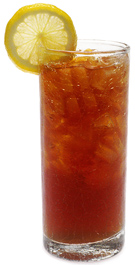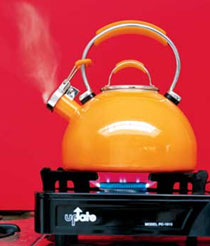
Source: Iced Tea, Renee Cornet, Wikimedia Commons

Source: Iced Tea, Renee Cornet, Wikimedia Commons
The next time you add sugar to unsweetened tea, take notice of the changes to the solution in the following scenarios.
What can you do to help the sugar crystals dissolve?

Source: Kang Kim, Real Simple
Did you think about heating up the tea? You are right! Heating up the tea (or most any solution) will help the sugar dissolve more. However, it is Texas, and most of us like to drink cold tea in the summer, not hot. Add ice to make your now sweetened tea cold again. Will the sugar stay dissolved? Yes!
In each of the three steps above, you created one of the following types of solutions: saturated, unsaturated, and supersaturated.
![]() Identify which type of solution was created in each step.
Identify which type of solution was created in each step.
A supersaturated solution is one that has more solute than it can hold at a certain temperature. Typically when the temperature of a solution is increased, more particles can be dissolved, thus increasing the amount of solute. A supersaturated solution goes through all of the steps listed above for the iced tea.
![]() Drag and drop the steps below to create a supersaturated solution (use the picture below to help guide you).
Drag and drop the steps below to create a supersaturated solution (use the picture below to help guide you).
Remember, a supersaturated solution will look just like an unsaturated solution with no solute settled at the bottom. However, there is more solute than the solvent can actually hold. Any slight change to the solution will cause all of the solute to come out.
Now you know how to make a supersaturated solution, but why, outside of chemistry class or making really sweet iced tea, would you want to do this?
![]() Watch the video below and use your notes to answer the following questions.
Watch the video below and use your notes to answer the following questions.
Source: Crystal Growing - Cool Science Experiment, SteveSpanglerScience, YouTube


It is important to know that the terms saturated, unsaturated, and supersaturated are relative terms. As the temperature of the solution changes, so does the amount of particles that can be dissolved in the solvent. Solubility curves show how changing the temperature changes the solubility of particles in a solvent.